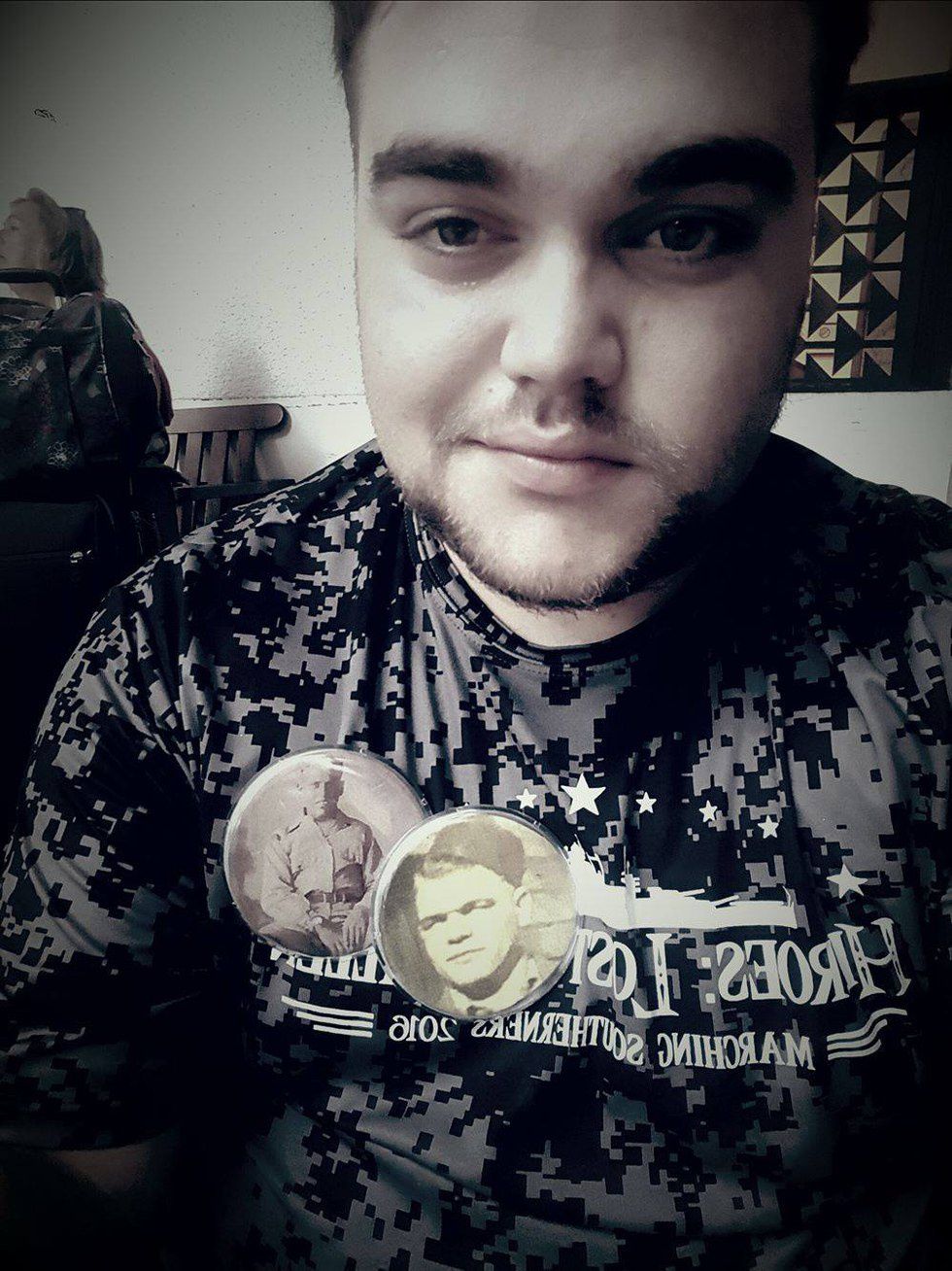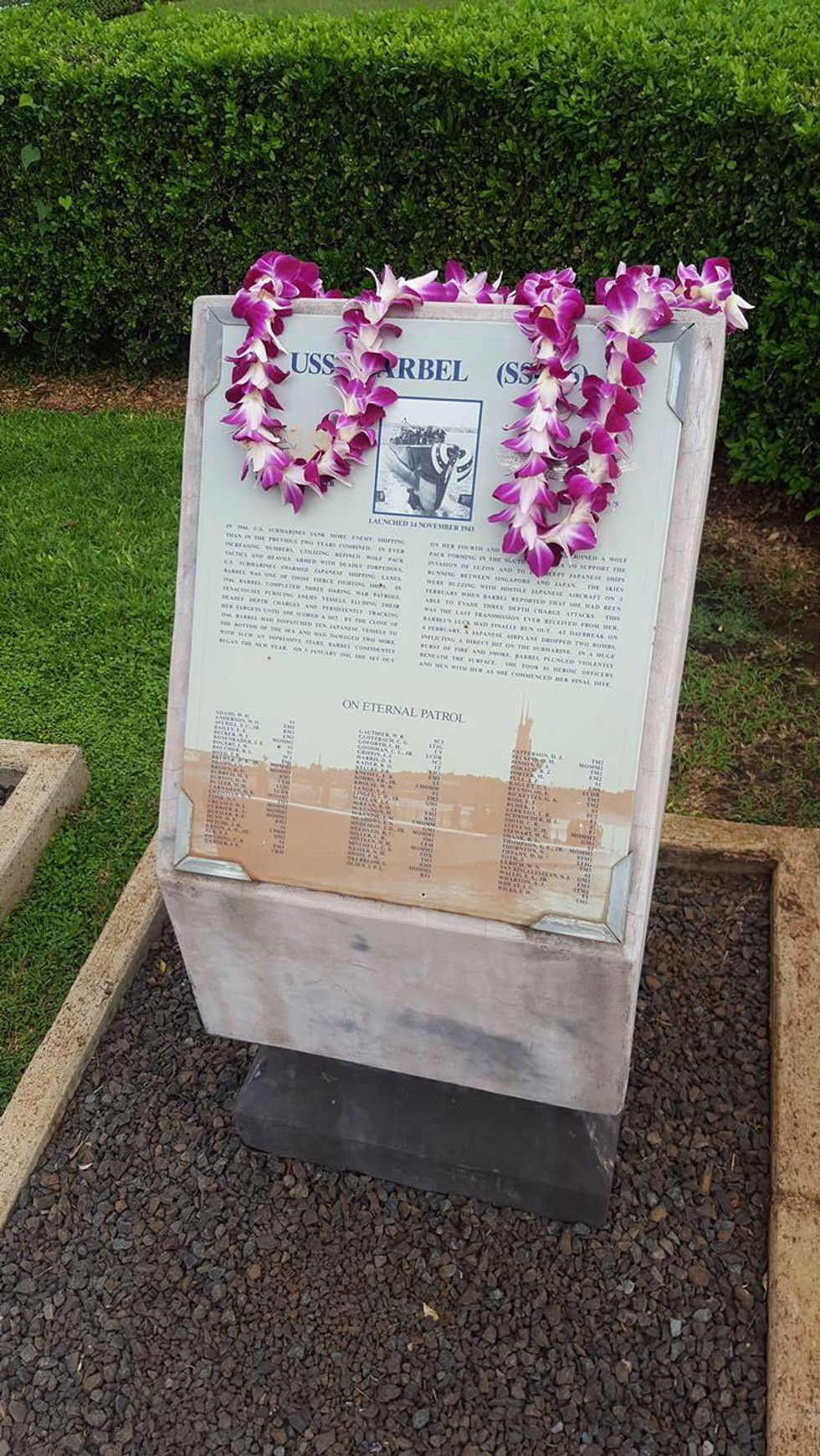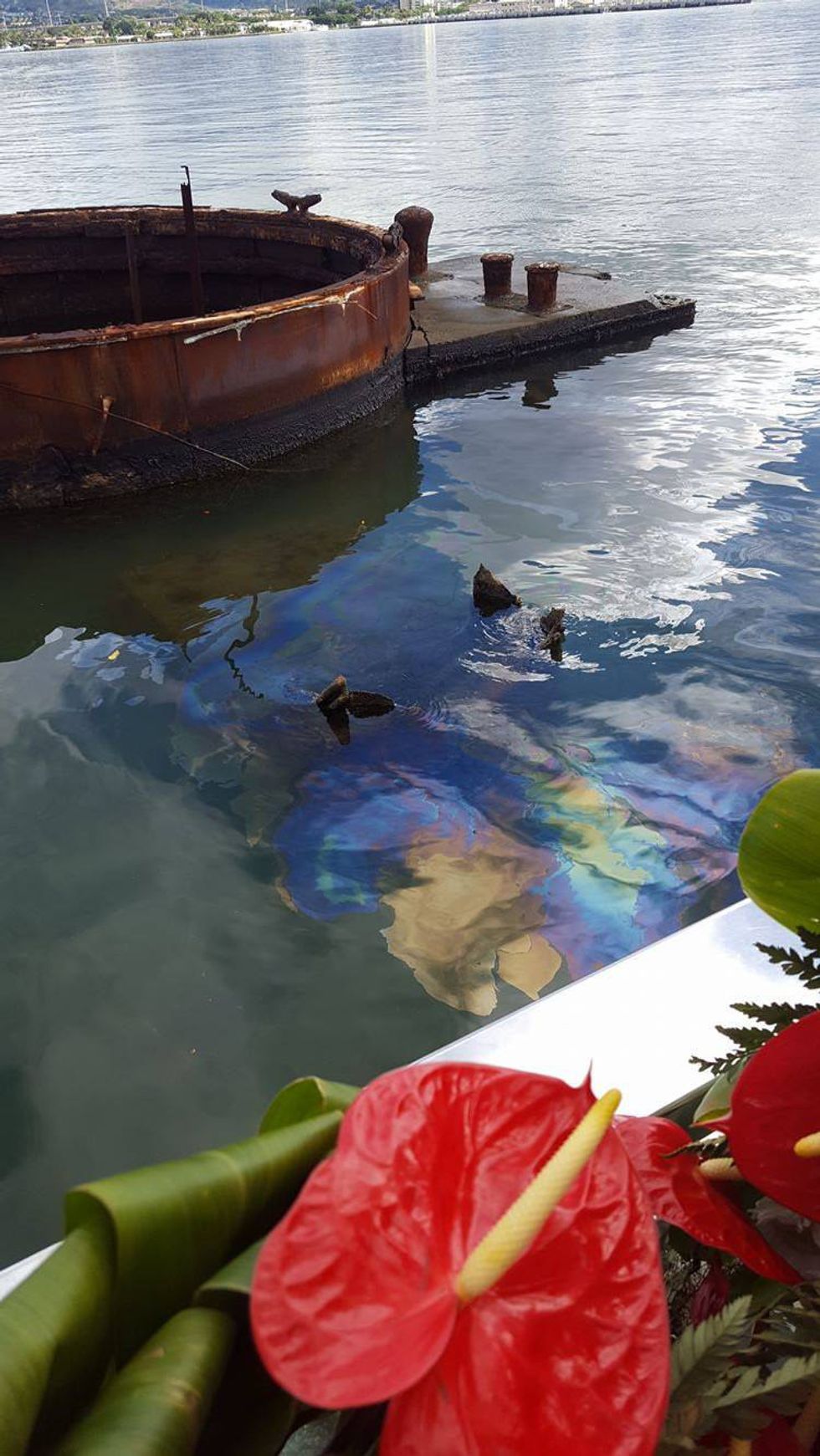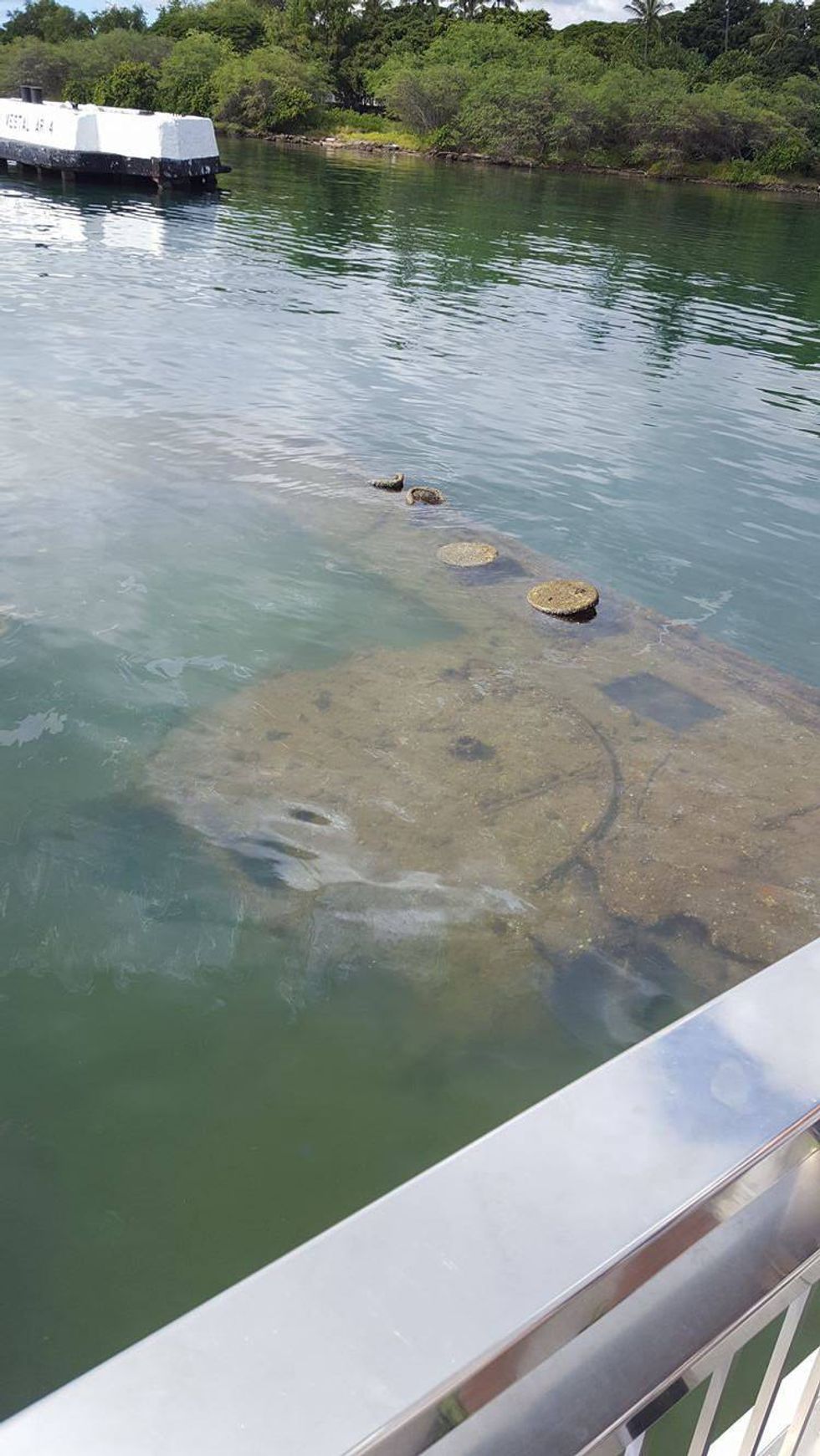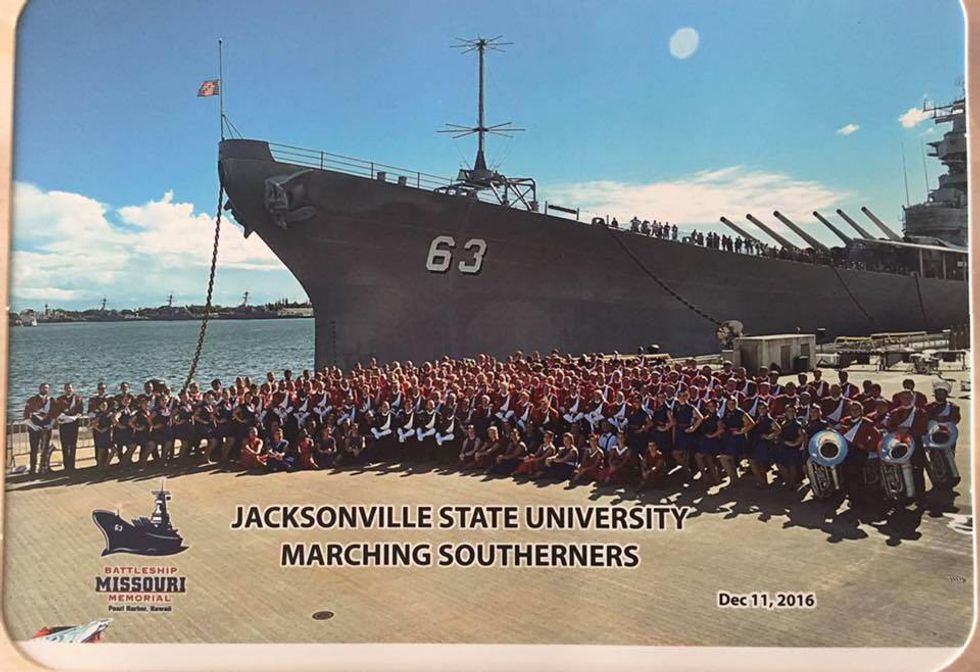"December 7th 1941....a day that will live in infamy" -Franklin Delano Roosevelt
Last year, in November, the Marching Southerners at Jacksonville State University performed a Veteran's day program at half-time, assisted by some vocalists from the vocal department. It just seemed like a normal performance that prevented us from performing our full half-time show at half-time, but it turned out to be a life-changing moment. At the end of our playing of "God Bless America," the announcer said he had a special message for the Marching Southerners. It was very confusing, but we instantly knew it was going to be something very important.
"Due to your consistently superior performances, you have been invited to perform on the USS Missouri at the 75th commemoration of the Attack on Pearl Harbor on the island of Oahu, Hawaii."
Needless to say, we were overjoyed. We did not stay at attention because most of us were jumping up and down, squealing with excitement, some were crying with tears of joy and excitement. The entire stadium was experiencing an enormous sense of pride. I was overjoyed by the announcement. I was going to finally visit the place I had only heard of, seen pictures of, and dreamed of going for most of my life.
Flash forward to a year and a month later. The day is December 9th, 2016. It is 4:30 am, and the Marching Southerners, accompanied by many friends, family, and alumni convened at Hartsfield-Jackson International Airport in Atlanta, Georgia and began our journey. We had a day until we performed after we arrived on Oahu. That day was spent touring, hiking, swimming, and just having the time of our lives. Bed time finally rolled around, and we rested for the big day that was coming next.
I woke up the next morning not quite prepared for what I would be experiencing during the next 12 hours. My mother sent me to Hawaii with two pin buttons with a portrait of my paternal grandfather and my maternal great grandfather who both served in WWII. My paternal grandfather, whom I never met, was revered by my father as a devout patriot. It was his dream to visit Pearl Harbor to pay homage to his fallen brothers, but he never got the chance to.
I grabbed the buttons, my uniform, my horn, and loaded the bus for the commute to the harbor. Before we performed, we had a chance to tour the memorials. We observed plaques with the names of every sea craft lost during the invasion, with names of the deceased aboard them listed underneath. There were flower leis carefully placed on some from visiting family members coming to remember the ones they lost in the senseless attack.
There was not much chatter or talking on the grounds of the memorials at all. I don't know why I was surprised, though, because it is a place that does require a certain amount of reverence and reflection.
We had to board a ferry to visit the Arizona Memorial, which was the ship that suffered the most casualties on board. The Arizona Memorial sits in the shadow of the now retired battleship, the USS Missouri, and it could be clearly seen as the ferry made its way across the bay towards the final resting place of hundreds of US soldiers and their watery grave inside the USS Arizona. We arrived in the memorial, and none of us were prepared for what we were about to experience.
Down below us, just under the surface of the water, the sunken ship lay peacefully. The ship had become a home to many different types of fish, and the water was so clear we could see the many vibrant colors of them weaving in and out of rusted holes in the ship deck and hull. The air wreaked of heavy duty oil, which is still leaking out into the harbor from the ship's 1.5 million gallon oil tank at a rate of 2-3 gallons per day. Wreaths of flowers were carefully placed around the viewing windows, maybe to be symbolic in hopes that their deceased loved ones may see it from their ship. At the opposite end of the memorial, there was a room, again with many memorial wreaths, and Hawaiian flower leis cover the mantle and protective bars that keep tourists from crossing into the space between the barriers and the list engraved into the wall of all the men who died in Pearl Harbor during the invasion.
Observing all of this, I had to take a few moments to breathe and shed a few tears. It was overwhelming. My grandfathers may be missing from my life, but I felt them there with me. I felt their sadness, their mourning that they would have felt if they had seen it themselves. It was as if their spirit was vicariously looking through the eyes from their pictures that were nestled right above my heart. They saw everything I saw. They were feeling everything that I felt.
The experience went on, and we began to get dressed in our uniforms to perform our 2016 production for the last time, and what an honorable last performance it would be. I performed with every last bit of might I had in me, even though being out in the Hawaiian sun and humidity was torture in those uniforms. I performed for my grandfathers, in honor and memory of them who fought the war with such aim and determination.
It was an extremely humbling experience, but also a celebratory one. Where we performed was the beginning of WWII for the United States, and also where the war with Japan ended with the Japanese surrender on the deck of the USS Missouri in August of 1945. It was historical journey for the Marching Southerners, and one I will never forget. I can only give my sincerest thanks and gratitude to the organizers of the event that invited us and allowed us the honor to pay tribute to those fallen in the best way possible: through music.




